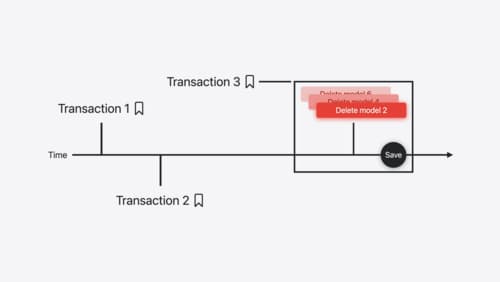What's new in CoreData?
Asked on 2024-08-13
1 search
In the latest WWDC, several updates and new features related to CoreData and SwiftData were introduced:
-
SwiftData Enhancements: SwiftData, introduced with iOS 17, now uses CoreData by default to store information. It allows for custom data stores, enabling the use of alternative backends like SQLite or a remote web service. This flexibility is enhanced by the new datastore protocol, which supports any persistence backend. SwiftData also provides access to the history of changes in a datastore, which is useful for tracking local changes that need to be synced to a remote service.
-
New Features in SwiftData:
- Index and Unique Macros: These new macros help optimize queries by making them more efficient and preventing duplicate entries.
- History API: This API allows tracking changes to your app's models, which is particularly useful for apps that need to sync data with remote services.
- Custom Data Stores: SwiftData now supports custom data stores, allowing developers to use their own document formats or persistence backends.
-
CoreData Coexistence: For those using CoreData, SwiftData history can now be used instead, providing a seamless transition and enhanced features for tracking changes.
For more detailed information, you can refer to the sessions:
- Platforms State of the Union (40:60)
- What’s new in SwiftData (00:07)
These sessions provide a comprehensive overview of the new capabilities and improvements in SwiftData and its integration with CoreData.

Platforms State of the Union
Discover the newest advancements on Apple platforms.

What’s new in SwiftData
SwiftData makes it easy to add persistence to your app with its expressive, declarative API. Learn about refinements to SwiftData, including compound uniqueness constraints, faster queries with #Index, queries in Xcode previews, and rich predicate expressions. Join us to explore how you can use all of these features to express richer models and improve performance in your app. To discover how to build a custom data store or use the history API in SwiftData, watch “Create a custom data store with SwiftData” and “Track model changes with SwiftData history”.

Track model changes with SwiftData history
Reveal the history of your model’s changes with SwiftData! Use the history API to understand when data store changes occurred, and learn how to use this information to build features like remote server sync and out-of-process change handing in your app. We’ll also cover how you can build support for the history API into a custom data store.
